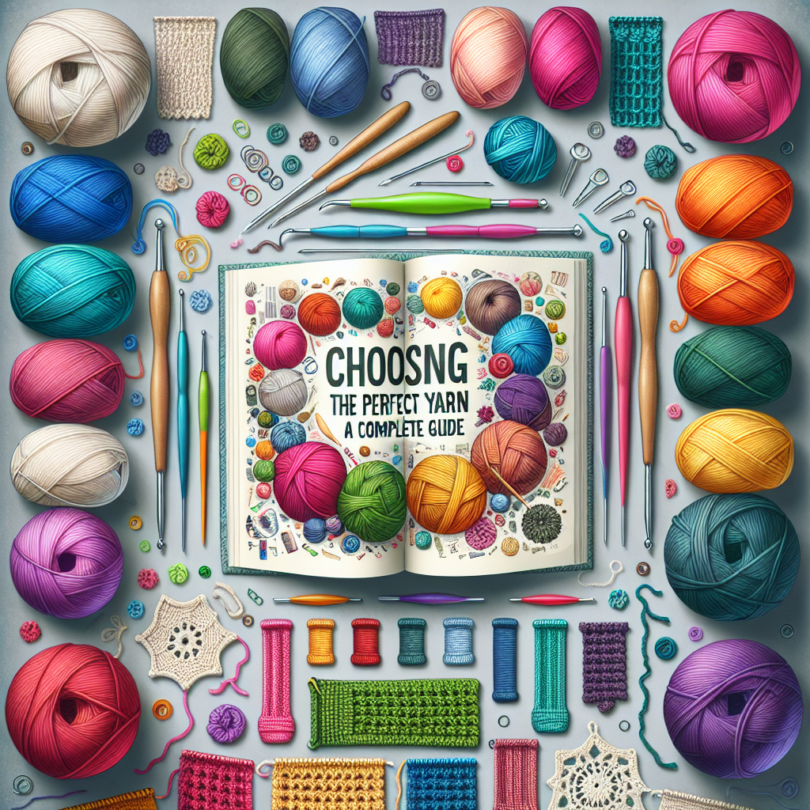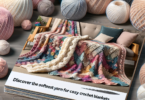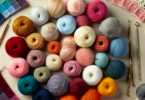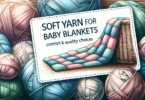When it comes to crochet, the type of yarn you choose can make or break your project. With a wide array of yarns available, it can feel overwhelming to select the right one. This guide will help you navigate the colorful world of crochet yarn, ensuring that you pick the perfect one for your next masterpiece.
Understanding Yarn Weight
Yarn weight plays a crucial role in determining the final look and feel of your crochet project. Here’s a quick rundown:
| Yarn Weight | Description | Suggested Uses |
|---|---|---|
| Lace | Very fine, delicate yarn | Shawls, lightweight garments |
| Fingering | Slightly thicker than lace | Socks, baby items, lightweight tops |
| Sport | Moderate thickness | Sweaters, blankets, baby items |
| Worsted | Versatile & commonly used | Sweaters, blankets, scarves |
| Bulky | Thick & plush | Quick blankets, winter wear |
| Super Bulky | Extremely thick | Chunky blankets, accessories |
| Jumbo | Extra thick | Statement pieces, blankets |
Choosing the Right Weight
Selecting the right yarn weight can significantly affect your pattern’s final dimensions and drape. Be sure to check the yarn label and follow the pattern recommendations to ensure a seamless crocheting experience.
The Material Matters
Yarn can be made from several materials, each with its unique properties. Here’s a closer look at common yarn materials and their applications:
-
Acrylic: Affordable and easy to care for, acrylic yarn is perfect for beginners. It’s widely available in a range of colors but may not have the same feel as natural fibers.
-
Wool: Soft and warm, wool is ideal for winter projects. It has excellent elasticity but can be challenging to care for, as it often requires hand washing.
-
Cotton: Great for summer projects, cotton yarn is breathable and has a lovely drape. It’s ideal for dishcloths and summer garments but may lack stretch.
-
Bamboo: This eco-friendly option has a silky texture and offers a beautiful drape. It’s wonderful for shawls and lightweight garments.
- Blends: Some yarns combine different fibers (like wool and acrylic), offering the best of both worlds. Consider blends for special projects requiring added durability or softness.
Tips for Finding the Right Material
-
Consider the Climate: If making a project for warm weather, opt for cotton or bamboo. For colder climates, go for wool or bulky acrylics to keep cozy.
- Project Purpose: Think about how the finished item will be used (e.g., baby blankets, clothing, or home decor). This will guide your material choice.
Colorway and Dye Lots
When planning your project, pay attention to the colors you want to use. Yarn comes in various hues, variegated options, and even hand-dyed selections.
Understanding Dye Lots
Dye lots refer to a batch of yarn dyed at the same time, ensuring consistent color. Always purchase enough yarn from the same dye lot to avoid color discrepancies in your project. If you plan to use multiple skeins, consider alternating rows from different skeins for a more uniform look.
Gauge Matters
Gauge refers to the number of stitches and rows you get per inch when crocheting. It’s essential to check your gauge before starting a project, as it impacts the size and fit.
- How to Check Gauge: Create a small swatch using the yarn and hook size specified in the pattern. If your gauge doesn’t match, adjust your hook size until you achieve the correct number of stitches per inch.
FAQs
-
What is the best yarn for beginners?
- Acrylic yarn is often recommended because it’s affordable, easy to work with, and comes in many colors.
-
Can I use different yarn weights in one project?
- It’s generally not recommended, as it can lead to inconsistencies in tension and drape. If necessary, choose compatible weights.
-
How do I know if my yarn is durable?
- Check the fiber content; natural fibers like wool tend to be more durable than cotton or blends, but always review yarn user reviews.
-
What is a crochet hook size’s relationship to yarn weight?
- Each yarn weight generally has a recommended hook size. Refer to the yarn label or your pattern for guidance.
-
Can I machine wash all yarn types?
- Not all yarn is machine washable. Always check the label for care instructions.
-
What’s the difference between variegated yarn and solid yarn?
- Variegated yarn has multiple colors and patterns throughout, while solid yarn is a single color.
-
How do I prevent yarn splitting while crocheting?
- Ensure you’re using the appropriate hook size and technique, and avoid overly fuzzy yarns, which are more prone to splitting.
-
What should I do if I run out of yarn mid-project?
- Check with the store for additional skeins from the same dye lot or consider substituting with a similar color/weight yarn.
-
What are some good yarn brands for quality?
- Some popular brands include Red Heart, Lion Brand, Bernat, and Debbie Bliss, known for their quality yarn selection.
- How do I store my yarn properly?
- Keep your yarn in a cool, dry place, preferably in a breathable container to avoid moisture and pest damage.
Conclusion
Choosing the perfect yarn for your crochet project might seem daunting, but with the right knowledge, it can become an enjoyable part of the crafting process. From understanding yarn weights and materials to considering color and gauge, every detail enhances your final result. So, take your time to select the yarn that feels right for you and your project. Happy crocheting!







Leave a Comment